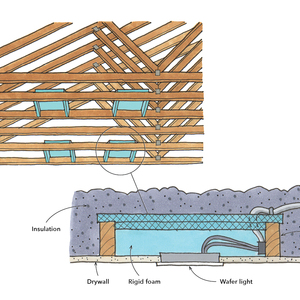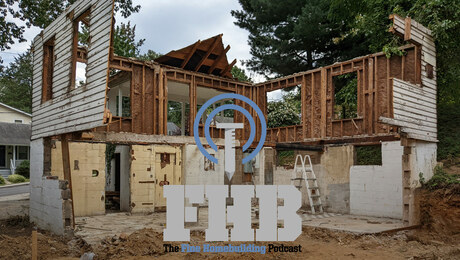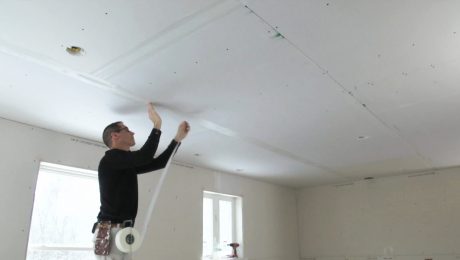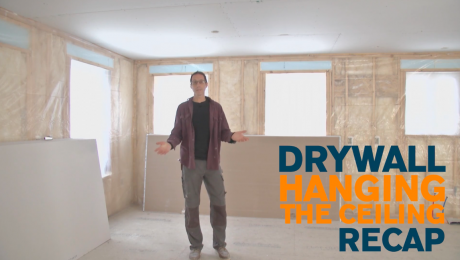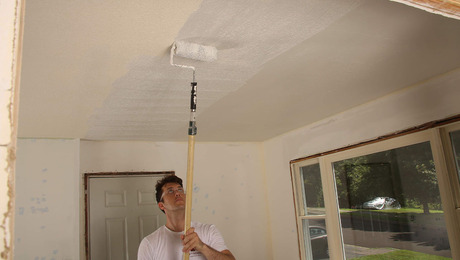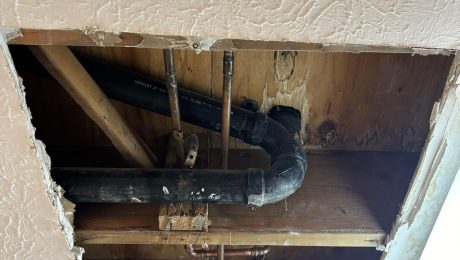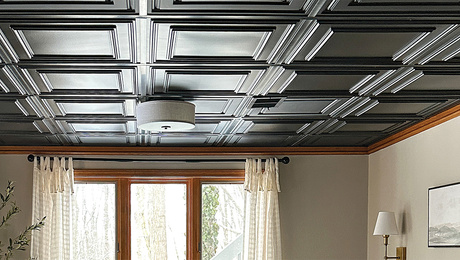Q:
I have a lovely tongue-and-groove ceiling beneath a mansard roof that I need to insulate before converting the attic into living space. The space is, at best, only 2 ft. high, but I am loath to tear out the ceiling boards. What types of insulating products can you recommend for this job that will save the ceiling?
Robert Eden, Hillsdale, MI
A:
John Ross, an engineer with Westwind Corp. in Vienna, Virginia, replies: Fiberglass batts are almost as cheap as blown fiberglass, but they stay put and cover the area evenly. Also, kraft- and foil-faced batts provide their own vapor barriers. Although the space is too low for you to stand in, or even sit in, you can install fiberglass batts without going into the attic or destroying your cherished ceiling.
First remove about a 1-ft. width of the ceiling boards from the entire length of one edge of the ceiling (see drawing). If you can, stick your head up there to locate the ceiling trusses; if you can’t get your head up there, use a mirror. This is also an excellent time to check the condition of the roof. Then measure the height of the insulation space at the edge of the roof. The batts you install depend on the height available. However, even if you’ve only got 3-1/2 in. of clearance at the edge, I suggest installing 6-1/2-in. R-19 and compressing both ends of the batt. The difference between R-13 and R-19 over the entire ceiling will be noticeable in your climate.
On the end of the ceiling opposite from the removed boards, drill 3/4-in. holes in the middle of each truss cavity. Run a snake through this hole to the side of the room where you removed the boards. Tie a length of clothesline to the snake and pull it to the open part of the ceiling.
After you’ve cut the insulation batts the same length as the truss cavities, trim a paint stirrer stick about 2 in. shorter than the width of the batt (12-1/2 in. for trusses on 16-in. centers) and staple the stick across the front of the batt. Fold the paper and staple it to both sides of the stick. The stick has to be shorter than the full width of the batt so that it won’t get caught on the truss webs. If the batt has folded edges, leave them folded.
Make a small hole in the middle of the batt’s paper facing, just behind the stirrer stick, pass the clothesline through the hole and tie a loop in the line about 6 in. in front of the stirrer stick. This loop has to be large enough so that you can tie the loose, or bitter, end of the line to it, yet the knot and the loop together must be small enough to pass through the hole in the ceiling. A bowline knot or a square knot works well because each is easy to untie.
With the slack taken out of the line, one worker feeds the insulation batt into the open end of the attic while the other worker gently pulls the line. The batt is fed so that the vapor barrier is face down in the attic. When the knot appears through the hole, the batt is in place. Untie the knot and pull out the line. Repeat the process for each truss space.
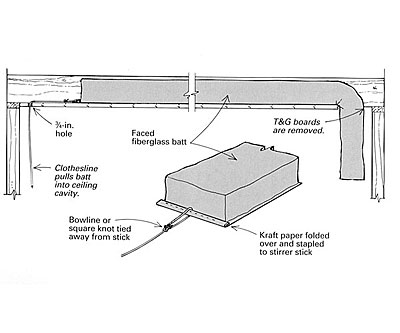
Fine Homebuilding Recommended Products
Fine Homebuilding receives a commission for items purchased through links on this site, including Amazon Associates and other affiliate advertising programs.

Nitrile Work Gloves

Foam Gun
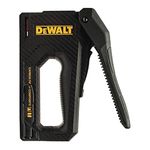
Staple Gun





